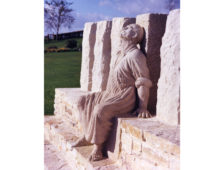A German General, a British Steam Engine
Just about everybody knows that George Stephenson built one of the world’s first successful steam locomotives, the “Rocket”.
But how many people know of the connection between Stephenson’s steam locomotives and the Battle of Waterloo?
Sounds rather unlikely? Not an obvious connection at all, but worth a read…
George Stephenson (1781-1848) grew up surrounded by engines in collieries and in 1812 he became the “Enginewright”, or the man in charge of engines, at Killingworth Colliery. He persuaded the mine owners that he could mechanise the transportation of coal and in 1814 he built a steam locomotive which he named “Blücher”.
The engine was as mighty as its namesake; it could haul 30 tons of coal up an incline at 4mph!
But why did Stephenson name his engine after a soldier? Field Marshal Blücher commanded the Prussian army as the allies fought Napoleon throughout Europe in 1813-14. In April 1814 Napoleon finally abdicated and sent into exile, the allies thought the French threat was a thing of the past. Blücher visited England and was hailed as a hero, so much so that Stephenson named his steam locomotive after the great man. The following year Napoleon escaped from exile on the island of Elba, returned to France to raise an army, and Blücher played a vital part in Napoleon’s final defeat at the Battle of Waterloo.
A powerful locomotive named after a great soldier. The great pity is that the engine did not survive the passage of time, although the name Blücher strikes a chord with all those who know about the Battle of Waterloo.


